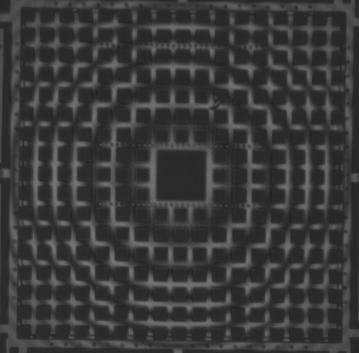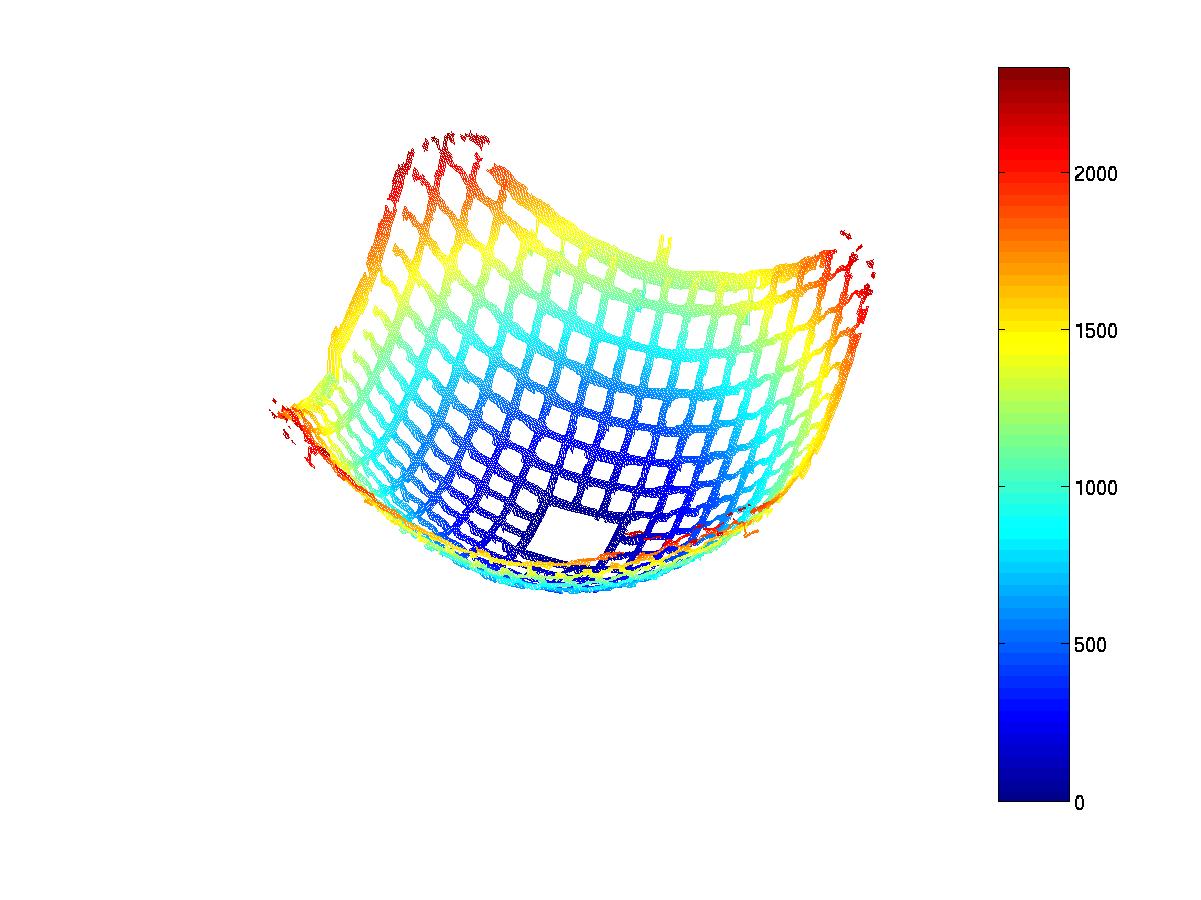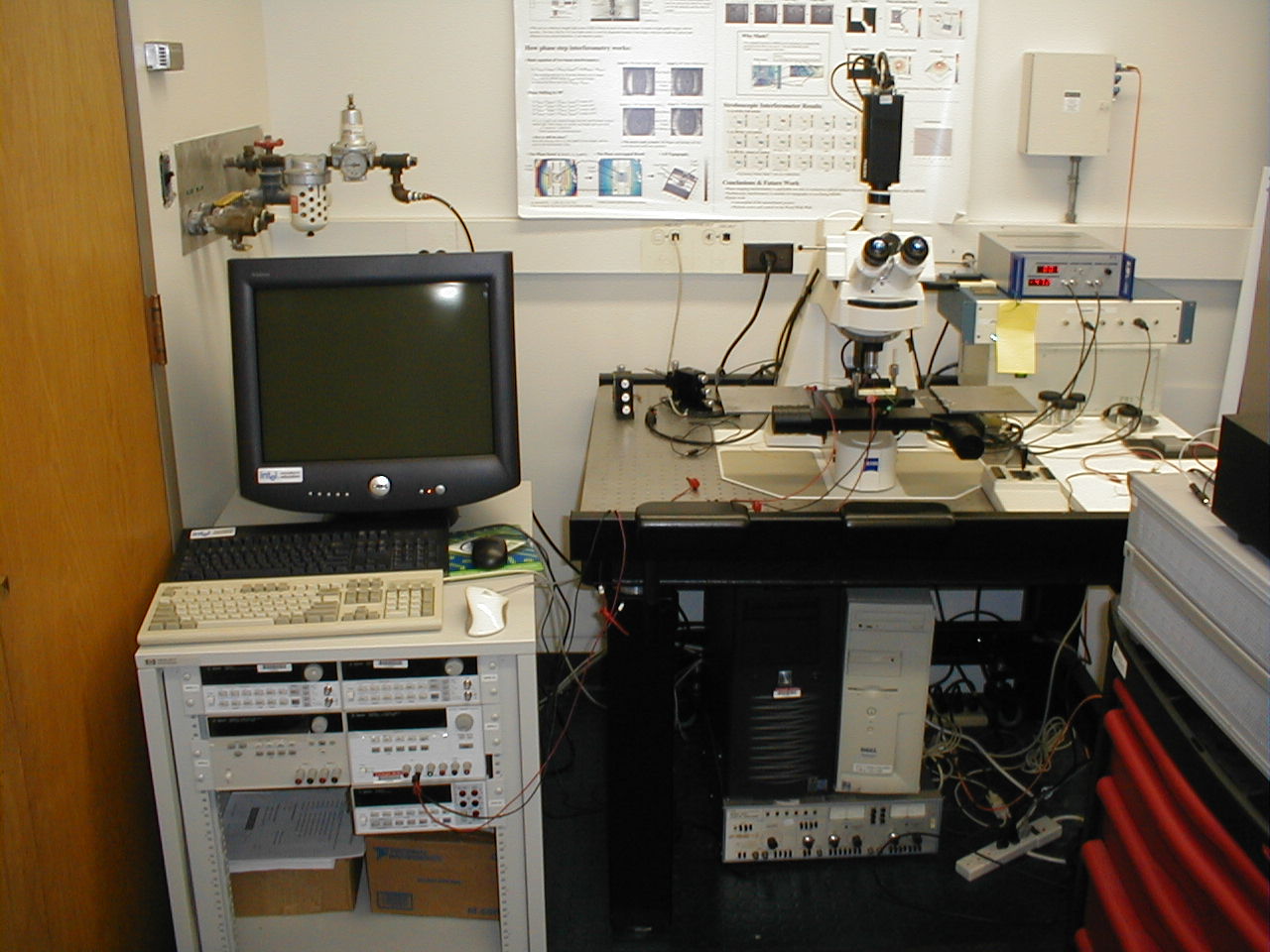The Carnegie Mellon MEMS Laboratory leverages its large design and characterization effort to serves as a user in this project. Our facilities include a MIT Microvision system with SuperNet routing tuned to > 150 Mbps. Additionally, the system has been upgraded to include an integrated Mirau interferometer. The interferometer used with phase unwrapping code allows for dynamic shape measurements of structures. Carnegie Mellon's NODAS and UC Berkeley's SUGAR will be used for comparison of simulatation and experimental results allowing for verification of the CAD models.

Interferometer fringes shown, 6 steps in z-axis plane

Curl of structure shown by phase unwrapping
Planned future work for this project includes linking the Microvision system with MEMS circuit-level and device-level CAD tools. First, a MEMS metrology system is planned for visualizing the exact structure (size and defects), generating solid models and mesh, and back annotating to the MEMS schematic. Second, a MEMS automated testbed is planned to download testbed configurations to the Microvision system and then compare the simulated and measured results.

Microvision system and Testbed Instruments
Contributors to the project at Carnegie Mellon include
Other Information:
Slide Presentation (PDF file)
Main Matisse Project Webpage
MIT Microvsion and Testbed Procedures Webpage